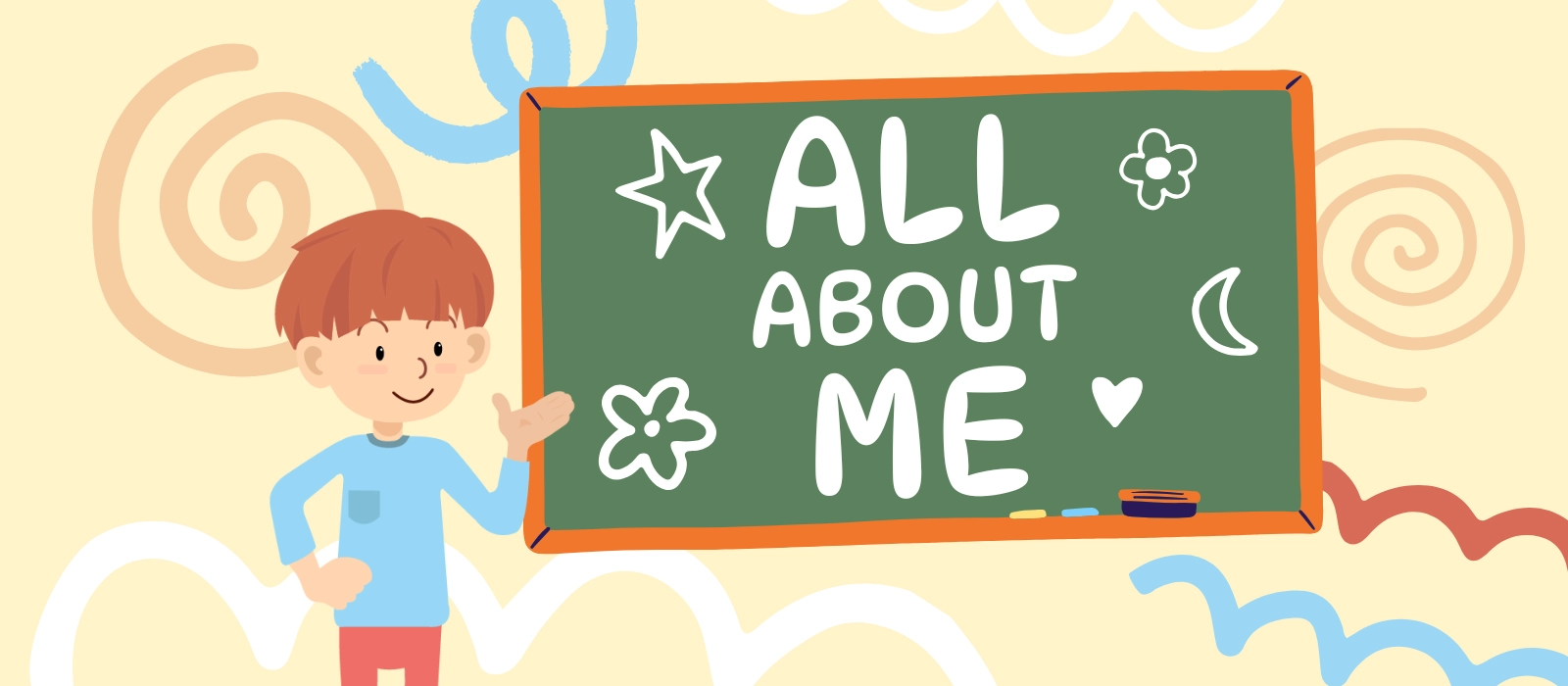What makes a child feel confident in a classroom? How do we help preschoolers express their emotions, describe their families, and understand who they are? Why is it that “All About Me” preschool activities appear in nearly every early childhood curriculum? As educators and kindergarten suppliers, we must ask: are we giving children enough opportunities to explore themselves?
All About Me preschool activities are designed to help young children understand who they are, where they come from, and how they fit into the world around them. These activities go far beyond fun—they nurture a child’s identity, encourage emotional expression, promote language development, and build social awareness. At the preschool stage, children are naturally egocentric, and All About Me themes turn this developmental stage into a powerful learning tool.
If you’re looking for structured, practical, and meaningful ways to implement “All About Me” activities in your preschool or kindergarten, this guide will walk you through 12 simple and engaging options that balance learning and fun.
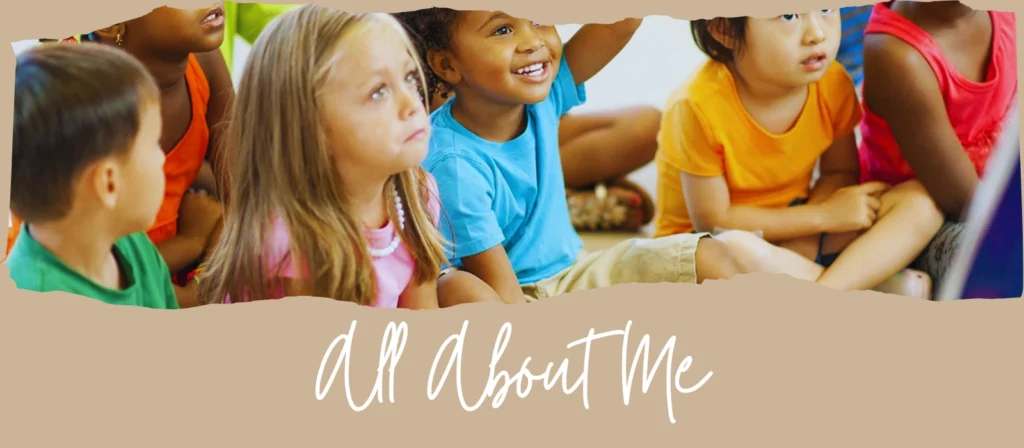
Why “All About Me” Themes Matter in Preschool
Identity Formation Starts Early
The preschool years are a critical time for identity formation. Children aged 3 to 5 are beginning to ask questions like, “Who am I?” “What do I like?” and “How am I different from others?” These questions may seem simple, but they are foundational for building self-awareness, empathy, and confidence. That’s where “All About Me” preschool activities come in—they offer guided, age-appropriate ways to help children explore their sense of self.
Learning Through Personal Experience
By focusing on personal attributes, families, preferences, and experiences, All About Me activities encourage children to think critically about their own identity. For example, when a child draws a picture of their family or describes their favorite food, they’re not just practicing fine motor or language skills—they’re forming a stronger concept of who they are. This builds pride, confidence, and social connection, especially when shared in group settings.
Alignment with Educational Standards
These activities are also closely aligned with early childhood education standards. Programs like Head Start and Montessori emphasize the development of the whole child—socially, emotionally, cognitively, and physically. All About Me themes naturally support that goal. They help foster emotional literacy, communication skills, and social bonding—critical areas that set the foundation for future learning.
Classroom Inclusivity and Connection
From a classroom management perspective, All About Me activities also create an inclusive environment. Children get to learn about themselves and others, discover shared interests, and build friendships. Teachers, in turn, gain insights into each child’s background, learning style, and emotional needs—allowing for more tailored and effective instruction.
Whether you’re a teacher, administrator, or curriculum planner, understanding the importance of All About Me preschool activities is the first step toward implementing a classroom that honors and celebrates individuality.
12 Easy & Fun All About Me Preschool Activities
1. Art Activities for Preschoolers All About Me
Art is a universal language for preschoolers. All About Me art activities for preschool allow children to represent their inner world in creative, open-ended ways. Through self-portraits, handprint paintings, and “my family” collages, children explore personal identity while developing fine motor skills and visual-spatial awareness.
One popular option is the “This is Me” collage. Children cut out magazine pictures or draw things that represent their interests—like favorite foods, animals, and places—and paste them around a photo or drawing of themselves. This encourages self-reflection and promotes storytelling as they share their choices with the class.
Another engaging idea is using mirrors and multicultural skin-tone crayons to create realistic self-portraits. This helps foster inclusivity and opens the door to conversations about diversity and belonging.
All About Me preschool activities like these not only improve expressive skills but also provide teachers with valuable insights into each child’s personality and emotional development.
2. Printable All About Me Preschool Activities
Printable All About Me preschool activities are a teacher’s best friend—easy to prepare, consistent across classrooms, and accessible for all skill levels. These worksheets and handouts offer structure while still giving room for creativity and self-expression.
One example is the classic “All About Me” worksheet, which includes sections for children to draw their face, trace their name, color their favorite food, and mark their birthday on a calendar. Another is the foldable “All About Me” mini-book, where each page covers a different topic such as favorite animals, family members, or future dreams.
Using printable all about me preschool activities allows children to work at their own pace and revisit what they’ve created throughout the school year. Teachers can collect these into a portfolio, offering an evolving view of each child’s growth and identity.
For educators looking to customize content, editable digital templates are also available. These can be adapted for inclusive language, bilingual classrooms, or particular classroom themes.
These types of preschool activities for All About Me lessons ensure consistency while still allowing a child’s personality to shine. Plus, they’re great for sending home to involve families in classroom learning.
3. All About Me Preschool Science Activities
Science in preschool is all about discovery—and what better way to start than discovering oneself? All About Me preschool science activities are a creative way to introduce basic scientific thinking through the lens of the human body, the senses, and growth over time.
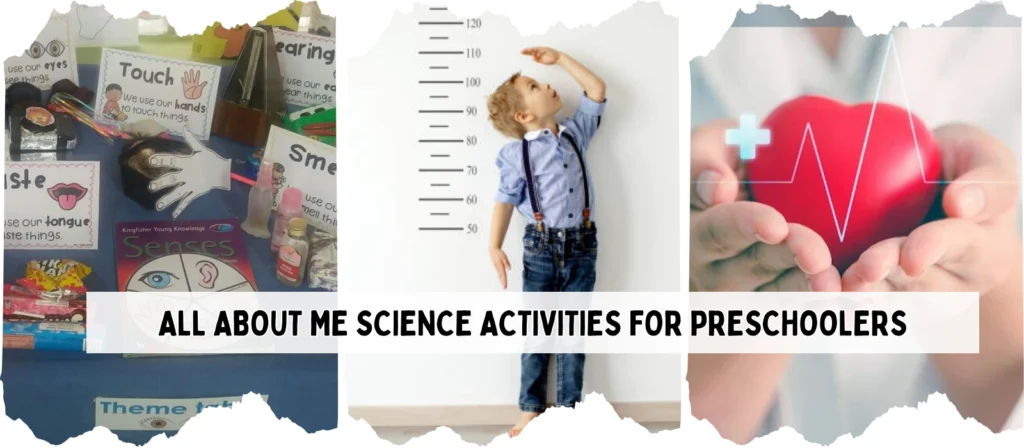
One simple yet powerful activity is the “My Five Senses” experiment. Children explore touch, taste, smell, sight, and hearing through guided activities using common objects. For example, create a sensory table with scented jars, textured fabrics, and musical instruments. Ask children to describe what they sense and match each experience to the correct sense.
Another engaging All About Me science activity is the growth chart project. Using string or yarn, measure each child’s height at the beginning of the year. Record it and revisit it every few months. Children learn how their bodies grow, and this visual display becomes a source of pride and curiosity.
You can also explore body systems in a fun and age-appropriate way. For instance, use large posters or felt boards to show where the heart is located or how we breathe. A simple stethoscope station allows kids to listen to their heartbeat—a great conversation starter for understanding how their bodies work.
These preschool science activities bring the theme of All About Me to life in a tactile, inquiry-based way. They align with early learning science standards while keeping the focus on self-awareness and discovery.
4. All About Me Craft Activities for Preschoolers
Crafts are a staple in any preschool classroom, and when it comes to all about me preschool activities, they offer a perfect opportunity for hands-on exploration of personal identity. All About Me craft activities for preschoolers combine creativity with storytelling, helping children share who they are through meaningful, tangible creations.
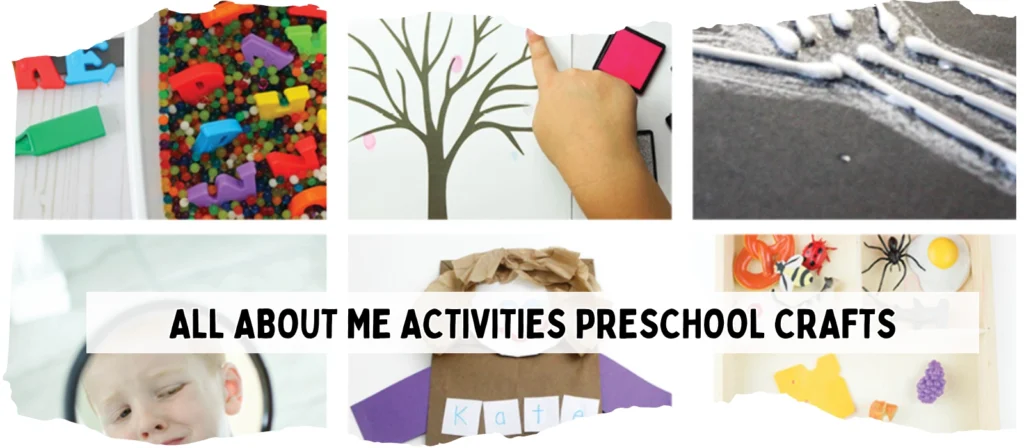
One engaging project is the “My Name Banner.” Each child decorates their name using cutouts, stickers, yarn, or nature items like leaves and flowers. Not only does this support letter recognition and fine motor skills, but it also builds pride and ownership. Hang the banners around the classroom to create an environment that reflects each student.
Another fun idea is a “Feelings Face Wheel.” Using paper plates and movable arrow fasteners, children design a face to show different emotions—happy, sad, angry, excited, and more. This helps kids communicate how they feel throughout the day, supporting emotional development.
Family portrait frames are also popular. Provide foam frames and let children decorate them before inserting a photo or drawing of their family. This reinforces the connection between home and school, which is a key theme in many all about me preschool activities.
All of these craft activities can be easily modified to suit different cultures, learning abilities, and classroom sizes. Teachers can also create themed craft centers that rotate weekly, each one highlighting a different aspect of self-discovery—from “My Favorite Foods” to “Things I’m Good At.”
Integrating All About Me craft activities for preschoolers into your curriculum builds not just creativity but confidence, empathy, and expression.
5. All About Me Math Activities for Preschoolers
Math is not just about numbers—it’s about patterns, relationships, and comparisons. When math is integrated into all about me preschool activities, children begin to see how numbers connect to their lives. All About Me math activities for preschoolers provide hands-on ways for young learners to explore who they are while building essential early math skills.
One of the simplest activities is creating a height chart. Measure each child and record their height on a visual graph. Then ask children to compare: Who is the tallest? Who is shorter than me? This reinforces vocabulary such as taller, shorter, more, and less while connecting math to the child’s body.
Another great option is the “Favorite Things Graph.” Children vote for their favorite fruit, animal, or color by placing a sticker or drawing on a large classroom chart. After collecting the results, review which item had the most and the least votes. These preschool all about me activities introduce graphing and basic data analysis.
Counting activities are also powerful. Ask children to count the number of letters in their names, the number of people in their family, or how many teeth they’ve lost. You can create simple worksheets or charts that reflect these personal facts.
You can even bring measurement into the fun with a “My Feet” activity—tracing and measuring the size of each child’s foot using nonstandard units like blocks or cubes. It adds movement, context, and laughter to early numeracy.
All About Me math activities for preschoolers transform abstract concepts into meaningful experiences. They’re a key piece of a strong All About Me preschool activities curriculum.
6. Name Recognition & Letter Activities
Language development is a central part of all about me preschool activities. One of the first words most children learn to recognize and write is their own name. All About Me name recognition activities turn this powerful moment into a source of pride and a stepping stone to literacy.
A simple and effective idea is the “Name Puzzle” activity. Teachers write each child’s name on a strip of cardstock and cut the letters apart. Children then reassemble their names like a puzzle. This helps them understand letter order and name spelling while strengthening fine motor skills.
Another favorite is the “Name Tree” project. Each child writes their name on a trunk and adds leaves showing things they like, their favorite color, or family members’ names. This combines literacy, creativity, and identity-building in one interactive display.
Teachers can also use magnetic letters, dry-erase boards, or alphabet stamps in centers where children practice forming their names and the names of friends. Incorporating songs like “There Was a Kid Who Had a Name” (to the tune of BINGO) reinforces auditory recognition and letter-sound connection.
All About Me preschool activities focused on names and letters allow children to form deep connections between language and identity. These activities are especially valuable for English language learners or children from bilingual households, where name pronunciation and cultural heritage carry strong emotional value.
As a cornerstone of all about me activities for preschoolers, name-based projects are adaptable, inclusive, and endlessly engaging.
7. My Favorite Things Sorting Game
All About Me preschool activities become especially meaningful when children are encouraged to explore and sort what makes them unique. The “My Favorite Things Sorting Game” is a versatile, hands-on activity that develops categorization skills, vocabulary, and social-emotional awareness.
To start, provide children with a variety of picture cards showing foods, toys, animals, colors, and activities. Ask them to select and sort their favorites into categories. For example, they can sort “Things I like to eat,” “Things I play with,” and “Places I love.” Encourage them to explain their choices, helping them build language and reasoning skills.
This activity can also be extended into a group game. Create a large wall chart with sections labeled by different themes (e.g., favorite colors, animals, or outdoor activities). Children place their choices under each theme and then compare with their classmates. This builds community and encourages respectful discussion of similarities and differences.
To increase challenge and engagement, you can incorporate math by graphing favorite categories, or storytelling by having children draw or narrate scenes involving their favorite things.
Integrating sorting games into All About Me preschool activities gives children agency to explore personal preferences in a playful way, while strengthening classification and cognitive development skills.
8. Feelings & Emotions Board Game
One of the most important goals of all about me preschool activities is helping children recognize and manage their emotions. The “Feelings & Emotions Board Game” is a powerful tool that makes emotional literacy engaging, interactive, and age-appropriate.
To set up this activity, prepare a colorful board featuring common emotions like happy, sad, angry, surprised, scared, and proud. Include matching facial expression cards, and let children roll a dice or spin a wheel to land on different emotions. When a child lands on a feeling, they share a time they experienced that emotion or act it out.
This not only encourages emotional awareness and vocabulary development but also builds empathy as classmates learn about each other’s experiences. Teachers can guide the conversation gently to ensure a safe and supportive environment, using visual aids or emotion puppets for children who need extra help expressing themselves.
You can also enhance the game with classroom mirrors so children can practice making the facial expression associated with each emotion. This helps connect visual, physical, and linguistic cues—a crucial integration for young learners.
All About Me preschool activities like this foster emotional intelligence from an early age. Children learn that all feelings are valid and that they can communicate those feelings in healthy ways.
These types of games are especially useful during transitions, such as the start of the school year, when emotions can run high. They make social-emotional learning both structured and fun.
9. Family Tree Poster Craft
Family identity is a core component of most all about me preschool activities. Children thrive when they feel connected to their families, and the “Family Tree Poster Craft” is an engaging way for them to visually explore and celebrate their roots.

Begin by providing each child with a tree template and an assortment of cut-out leaves. On each leaf, they can write or draw a family member—parents, siblings, grandparents, or even pets. Teachers may guide children in identifying each relationship and help with writing names if needed.
This craft can be extended into a group discussion about what makes each family unique. Some families may have two moms or dads, others may live with grandparents or foster parents. All About Me preschool activities that highlight these differences support inclusivity and belonging in the classroom.
Integrating family-based crafts into your curriculum helps build empathy and understanding. It also helps children appreciate their home lives and feel seen and valued. When displayed on bulletin boards or hallway walls, these family trees can turn into powerful symbols of diversity within the school community.
To further reinforce learning, pair this with a storytelling session where each child presents their tree. Not only does this enhance communication skills, but it also nurtures a deep sense of self-worth—one of the primary goals of any effective All About Me preschool activity.
All About Me preschool activities that incorporate family identity are essential for helping children build a sense of security and pride.
10. My Hobbies Show & Tell
Show & Tell is a classic classroom activity—and when tailored as part of all about me preschool activities, it becomes a powerful tool for self-expression and confidence building. The “My Hobbies Show & Tell” session gives every child a platform to share something they love, helping them articulate their passions and celebrate their individuality.
Ask children to bring an object or drawing that represents their favorite hobby—whether it’s painting, dancing, building with blocks, or feeding fish. One by one, each child stands up to talk about why they love this activity and what it means to them. Teachers can guide the conversation with prompts like, “How often do you do this?” or “Who do you do it with?”
This All About Me preschool activity strengthens oral language, memory recall, and presentation skills. It also builds classroom community, as children learn about each other’s interests, discovering common ground or exciting differences.
To enhance the experience, set up a “Hobbies Corner” or rotating display board where students can showcase hobby-related items for the week. This adds visual reinforcement to the activity and gives children ownership of their space.
Teachers may also incorporate a writing or drawing follow-up, where children record their hobby using pictures or words. These mini-projects can be collected into an “All About Me” portfolio by the end of the theme cycle.
All About Me preschool activities like “My Hobbies Show & Tell” offer meaningful, learner-centered engagement. They help children understand that their preferences and interests are valued and worth sharing.
11. Body Parts Song & Movement Activity
Preschoolers learn best through movement and music. That’s why body-related songs and kinesthetic games are an essential part of all about me preschool activities. These activities help children identify body parts, improve coordination, and express themselves physically—all while reinforcing their sense of identity.
Start with classics like “Head, Shoulders, Knees, and Toes,” which not only names body parts but encourages gross motor development and rhythm. As children sing and move, they build body awareness and connect vocabulary with real-world experience.
You can create your own All About Me body song with lyrics such as, “This is my nose, it helps me smell! This is my mouth, it helps me yell!”—which add humor and personalization to the learning process. Invite children to suggest their own lines and movements for a highly engaging group experience.
Another fun activity is the “Body Outline Mural.” Have children lie down on butcher paper while a classmate traces their outline. Each child then colors in their features and labels parts like hands, legs, ears, and eyes. This makes learning anatomy interactive and age-appropriate.
Movement games like “Simon Says” with body-related commands (e.g., “Touch your elbow!” or “Wiggle your toes!”) are simple yet effective. They enhance listening skills while deepening anatomical knowledge.
Incorporating these body-themed activities into your All About Me preschool activities promotes health awareness and supports physical development milestones. It also empowers children to feel confident and proud of their bodies.
12. All About Me Book Project
Creating a personalized book is one of the most comprehensive and rewarding all about me preschool activities. The “All About Me Book Project” brings together language, art, family, emotions, and self-expression into one keepsake that children—and parents—will treasure.
Each child creates a multi-page book filled with information about themselves. Typical pages include: “This is my name,” “This is what I look like,” “My family,” “My favorite color/food,” “When I’m happy/sad,” and “When I grow up I want to…” You can either use printable templates or allow children to fully design each page on blank paper for a more creative experience.
This activity spans multiple domains: fine motor (cutting, drawing), literacy (dictation or writing), emotional development (self-reflection), and cognitive skills (sequencing, categorizing). All About Me preschool activities like this foster independence and ownership over the learning process.
Teachers can support by scribing for children who can’t yet write, or by turning oral storytelling into captions. The completed books can be laminated or bound and placed in the classroom library for shared reading, or sent home as a culminating project.
For bilingual classrooms, consider encouraging families to contribute in their home language. This reinforces cultural pride and strengthens school-home connections.
The All About Me Book Project not only supports early childhood standards but also deeply engages children in learning about themselves in a structured, meaningful, and fun way. It is one of the most reflective and lasting examples of how all about me preschool activities contribute to whole-child development.
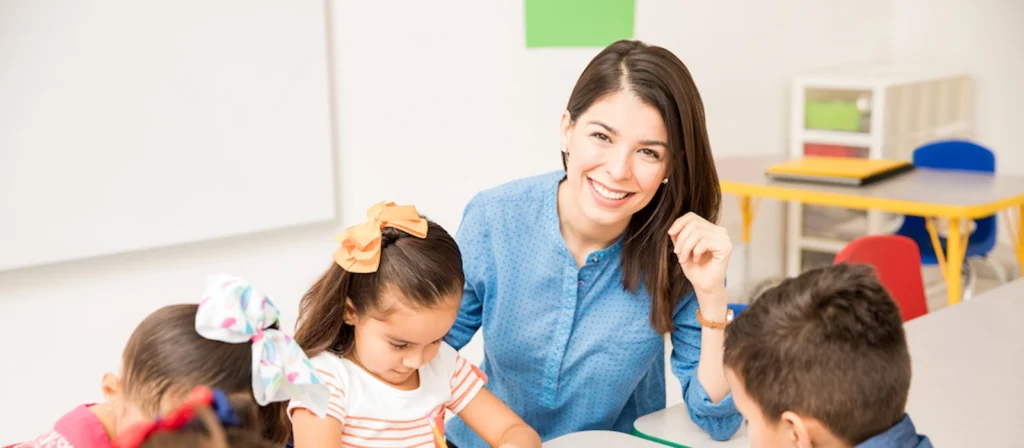
Tips for Teachers: How to Integrate These Activities into Daily Classroom
Plan a Weekly Theme Cycle
Successfully implementing all about me preschool activities across the daily routine requires thoughtful classroom planning. Teachers must integrate learning zones, flexible scheduling, and interactive environments to make the most of these highly personalized activities.
Start by establishing a weekly or monthly “All About Me” theme cycle. Each day can focus on a different domain—Monday for art, Tuesday for math, Wednesday for literacy, Thursday for science, and Friday for show & tell. This approach helps reinforce consistency while keeping activities diverse and engaging. Within this model, all about me preschool activities become an organic part of your instructional framework, rather than an isolated unit.
Design Spaces with XIHA Furniture Philosophy
The classroom setup plays a critical role in the success of all about me preschool activities. This is where XIHA Furniture’s product philosophy shines. Our ergonomic preschool tables and chairs provide safe, age-appropriate workspaces for drawing, crafting, or writing All About Me books. Our reading corners are designed to be cozy and calming—perfect for quiet time or self-reflection during name recognition or emotion board games. Interactive panels, display walls, and modular shelves allow children to store and showcase their work—boosting ownership and classroom identity.
Create Dedicated Learning Zones
When using all about me activities for preschool classrooms, it’s essential to create distinct zones: a craft station, a math graphing wall, a science discovery table, and a cozy emotional learning area. XIHA’s flexible classroom furniture supports these diverse needs by encouraging natural flow, collaboration, and safety. All furniture meets rigorous safety standards, so while children explore who they are, teachers can focus on development—not risk management.
Celebrate Every Child’s Work
Incorporating all about me preschool activities throughout the classroom layout also helps with behavior management. When each child sees their work displayed—whether it’s a family tree, a feelings chart, or a hobby drawing—they feel seen, valued, and more connected to the classroom environment.
With the right tools, materials, and spatial organization, all about me preschool activities can transform a classroom into a dynamic ecosystem of identity, inclusion, and growth.
Conclusion
All about me preschool activities are more than just classroom fun—they’re essential tools that help children explore identity, build emotional intelligence, and develop foundational academic skills. When paired with the right classroom setup and educational furniture, like those offered by XIHA Furniture, these activities can truly transform early learning environments into safe, inclusive, and enriching spaces. Let’s empower every child to say, with confidence: “This is me.”

